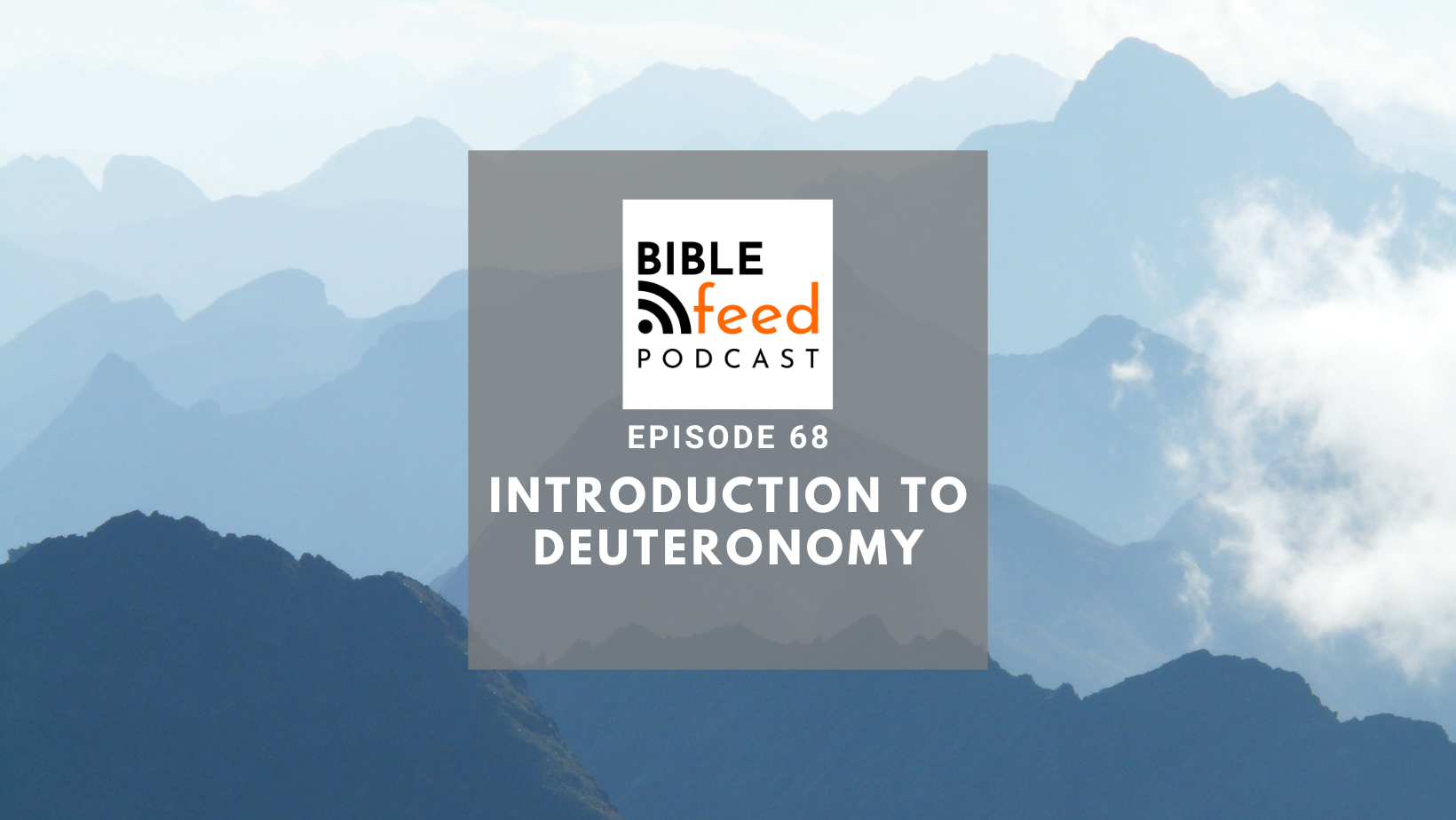Episode 68: Introduction to Deuteronomy – the new generation
Laurence and Paul finish our series on the 5 books of Moses, the Torah by looking at Deuteronomy. It turns out that this section doesn’t conclude with the people of Israel reaching their destination, then the main character dies (sorry for the spoiler…)! Instead they find that this book acts as a stage-setter, defining how leaders of this ancient people will be described for the next 600 years. Remarkably, they also find Deuteronomy making a surprise appearance at the end of that history, just before Israel were exiled to Babylon.
Show Notes
Laurence and Paul begin their discussion of Deuteronomy by briefly reviewing the books of the Torah (also known as the Pentateuch), paying special consideration to how they link together.
Deuteronomy is an anti-climax (if you’re expecting something else)
After a short overview of where this book comes in the historical narrative of the Bible, they give a very quick overview of the book of Deuteronomy. They notice how it’s simply called “Words” in the Hebrew Bible (Heb: devarim) and nothing much happens other than Moses gives a large speech to the people of Israel over the course of several days. At the end of the book, the people of Israel still don’t get into the promised land and the main character, Moses, dies on a mountain top!
In this way, Deuteronomy is not a typical engaging book of narrative, but that doesn’t mean it can’t teach us very powerful truths.
Ancient treaties and covenants
Laurence and Paul develop the discussion by looking at how the structure of the book is a close parallel to other contemporary ancient treaties between neighbouring kings and nations, including:
- Historical prologue
- Basic stipulations
- Detailed stipulations
- Document clause
- Blessings and cursings
- Recap and covenant ceremony
The difference here is that Deuteronomy is a treaty between Yahweh, the God of Israel, and his people, not just an agreement between human kings. And the key aspect of this covenant is that it is being renewed with a new generation. In this way, God’s covenant is being replayed to a new generation of people as their own “Mount Sinai” moment, and they have an opportunity of entering into the covenant for themselves.

Structure and themes of Deuteronomy
The book of Deuteronomy follows a structure that lists basic stipulations (the ten commandments) within the initial section and then expands on those in more detail later on in the book. Jesus followed a similar pattern when he distilled the commands down even further by saying:
“You shall love the Lord your God with all your heart and with all your soul and with all your mind. This is the great and first commandment. And a second is like it: You shall love your neighbor as yourself. On these two commandments depend all the Law and the Prophets.”
Matthew 22:37-40
Laurence and Paul continue to identify some of the themes that emerge from the book, including how Deuteronomy anticipates future generations learning from this book, (Deuteronomy 29:15), including the kings (Deuteronomy 17:14). This sets the stage for the books that follow, namely Joshua, Samuel and Kings. The questions raised in this next section of Israel’s history is whether or not the nation, with their kings, are going to be faithful to Yahweh or not. There is a particular connection between Deuteronomy and King Josiah who discovered the book of the law in the temple (2 Chronicles 34:24).
Genesis and Deuteronomy are bookends
Laurence and Paul conclude by looking at how Genesis and Deuteronomy act as book ends within the first five books of the Bible, (the Torah). There is a symmetrical structure across these books that help us understand how they are pointing forward to someone else who was to come to save them from their sins.
They consider Deuteronomy 18:15 which anticipates that a prophet like Moses will arise. The New Testament unanimously interprets this as Jesus, a figure presented in the gospels as a new Moses in many ways and the one through whom salvation comes.
More content about the book of Deuteronomy
A helpful summary of the structure of Deuteronomy can be found here, alongside other useful content at Open Bible Learning.
We looked in detail at the time when Jesus was tempted in the wilderness (and he quoted from the book of Deuteronomy) in our series on Matthew’s gospel.







